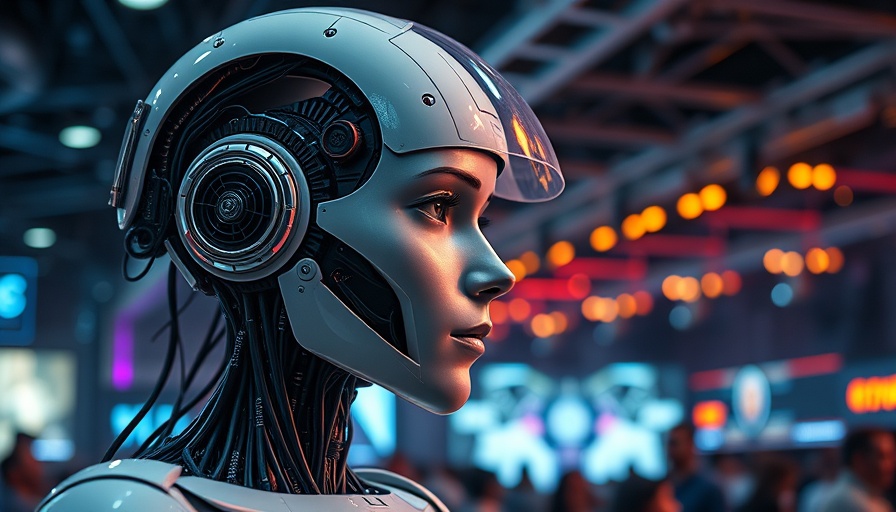
The New Battlefield of AI Models: Why Size Isn’t Everything
In recent days, the tech world has erupted with major releases that could change the landscape of artificial intelligence and automated reasoning as we know it. Notably, the launch of DeepSeek’s Prover V2, with an astonishing 671 billion parameters, stands out as a game-changer. This release has sparked discussions not only on model size but on efficiency and ethical implications in the realm of AI—an evolution that we've been anticipating for some time.
In 'DeepSeek and Microsoft Just Slapped OpenAI Across the Face with New Insane Models!', we dissect the latest trends and innovations in AI reasoning models, analyzing the implications and future of this technology.
DeepSeek: Raising the Bar with Prover V2
Launched as part of a rapid succession of innovations, DeepSeek's Prover V2—an AI model designed for rigorous math proof verification—promises to make significant impacts across several fields including education and cryptography. The overwhelming number of parameters positions it uniquely, allowing it to tackle complex Olympiad-level mathematics and deliver machine-verifiable proofs with impressive speed and accuracy. Compared to its predecessor, Prover V1.5, which utilized a modest 7 billion parameters, V2 leverages a foundation that seems to have learned at the feet of its predecessors and is outpacing competition in fundamental reasoning tasks.
Understanding the Controversy: Power and Responsibility
The release of models like Prover V2 opens up vital discussions surrounding transparency and responsible AI use. Critics question the security ramifications of releasing such powerful tools into the wild, fearing that they could be misused. Proponents, however, argue that democratizing access to advanced technology encourages scientific discovery and evidence-based approaches to problem-solving. The duality of power versus responsibility creates an engaging debate—a reflection of the societal tension between innovation and precaution in the age of AI.
Xiaomi’s MIMO 7B: Efficiency Over Size
Meanwhile, in Shenzhen, Xiaomi has countered the trend of massive models with its compact MIMO 7B. Designed to outperform larger models like OpenAI’s smaller variants, MIMO 7B showcases how adaptive architecture can yield exceptional reasoning capabilities without the exorbitant parameter count. Its multi-token prediction, extensive pre-training on both math and coding tasks, and other smart techniques highlight that efficiency might just be the new frontier in AI.
Microsoft’s Insightful Step: The FI4 Family
Adding to this dynamic landscape, Microsoft Research’s FI4 reasoning family also carries weight, presenting three distinct models aimed at heavy reasoning, educational tools, and simulations. What stands out is Microsoft’s method of curation, emphasizing precise prompts and response structures that foster deeper reasoning. While smaller than Prover yet significant at 14 billion parameters, the FI4 also benefits from robust training practices that help it maintain performance across various tasks.
Innovative Learning Approaches: What’s Next?
With developments from DeepSeek, Xiaomi, and Microsoft, it’s clear that the future of artificial intelligence might not rest solely in spinning out larger and larger models. Instead, these innovations hint at a deeper understanding of how to train smarter systems that grasp complex concepts and produce meaningful outputs. Techniques such as distillation, quantization, and innovative data mixing pipelines are set to become critical components of future AI models aimed at specialized tasks.
The Future of AI Reasoning: Predictions and Insights
As we look ahead, it’s essential to consider how these emerging technologies will affect our roles as creators and executors of knowledge creation. When AI models possess reasoning capabilities that challenge human understanding, will we still be the builders of future technology? Will we become dependent on machines in ways that prioritize convenience over comprehension?
DeepSeek's Prover V2, Xiaomi’s MIMO 7B, and Microsoft’s FI4 models exemplify a pivotal shift in how artificial intelligence can be implemented, asking us to consider not just what these tools can do, but also the ethical imperatives that arise as AI continues to grow in power. We are observing the onset of a new era in AI technology—one that requires vigilant navigation of innovation and ethics.
For those interested in exploring these developments further, now is the perfect time to engage with the community, share insights, and stay informed about the latest trends. The fusion of reasoning, ethics, and accessibility in the evolving world of AI is bound to shape the future, and being part of this conversation is critical.
 Add Row
Add Row  Add
Add 




Write A Comment